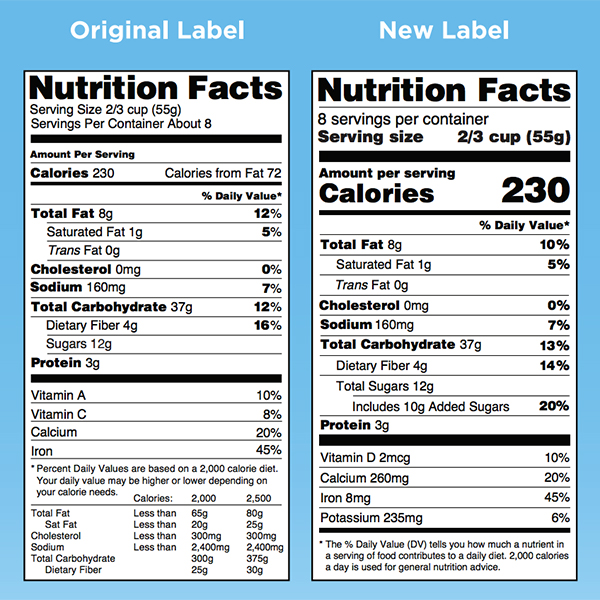Is Sugar Really That Bad for You?

Sugar. It’s been tied to diabetes, obesity, hyperactivity, and dental cavities.
It’s sweet and crave-worthy, and (too often) added to processed foods to improve taste, texture, and shelf life.
Sugar is in pretty much everything, including tomato sauce, salad dressings, and organic “all natural” baby foods. We can’t escape it, and, generally, we’re eating far too much of it.
On average, Americans consume more than 300 calories per day of added sugar — that’s 82 grams or 19.5 teaspoons — and teens are consuming much more, a whopping 28+ teaspoons!
How Much Sugar Is OK?
The World Health Organization (WHO) recommends “free sugar” (sugars added by the manufacturer, cook, consumer, as well as other concentrated sugar sources like agave, honey, and fruit juice) intake to be less than 10 percent of total daily calories.
On a 2,000-calorie diet, that would mean consuming less than 200 calories, or 50 grams per day of free sugar.
The WHO also suggests that there is convincing evidence to further reduce free sugar intake to less than five percent of total calories per day (100 calories, or 25 grams of free sugar on a 2,000-calorie diet).
In real-life equivalents, five percent is about the amount of free sugar found in one cup of sweetened Greek yogurt.
The American Heart Association has similar recommendations for added sugar. Their limit per day is no more than 100 calories of free sugar for women and 150 calories for men.
These recommendations do not refer to the naturally occurring sugars found in whole fruits, vegetables, and unsweetened dairy.
One of the big differences between added sugars (think: granulated sugar or high fructose corn syrup) and natural sugars (think: fructose, or the sugar found in fruit) is added sugars lack nutritional value.
Sure, certain processed foods that contain added sugars can be fortified with vitamins, minerals, and even fiber, but they don’t have naturally-occurring phytonutrients and antioxidants that natural sources of sugar, like strawberries, do. They’re just empty calories.
Where Sugar Hides
If you read the Nutrition Facts Label on the foods you purchase, you may have noticed a new addition: “added sugars.”
Previously, the Nutrition Facts Label didn’t differentiate between natural and added sugars, making it a challenge to know how much added sugar you are actually consuming.
The new label includes separate lines for the amount of total sugars and added sugars:

These changes will provide more transparency in labeling and hopefully, encourage food companies to reduce the added sugars in their products.
Ingredients on the label are listed in greatest to least amount, but manufacturers are getting sneaky by using multiple sources of sugar so that a singular source doesn’t appear high on the list.
To spot sugar in the line up, check for words like:
- fruit juice concentrate
- fruit juice
- cane juice
- turbinado
- invert sugar
- beet sugar
- corn syrup solids
- dextrin
- words that end in –ose like maltose, dextrose, fructose, glucose
Remember, added sugars are added sugars, no matter what lingo they are disguised under.
How to Cut Back On Sugar
If you’re trying to eat better, improve fitness, manage or reduce the risk of disease, and/or lose weight, the best advice is to reduce added sugar consumption, including those more “natural” yet still concentrated sugar sources like agave, honey, and fruit juice.
Keep your added sugar intake in check by eating a variety of foods in their natural state, i.e. fresh fruits, fresh vegetables, whole grains that you cook yourself, lean proteins without sauces and marinades, and unsweetened dairy.
Read ingredient labels. To cut out added sugar in a healthy way, assess your current sugar situation, and make moderate changes to progress toward your sugar goal.
Drastic measures can lead to dieting, extreme or rigid thinking, and obsessive behavior, which is not the desired result.
Yes, you can still have your cake and eat it too, but eat your fruits and veggies most often.
Moderation is king; sugar is not the demon… it’s the amount of sugar that makes the difference.
Editor’s Note: The new, expanded Ultimate Portion Fix nutritional program has an entire chapter on sugar addiction and how to help you eat better to avoid added sugar without deprivation.
